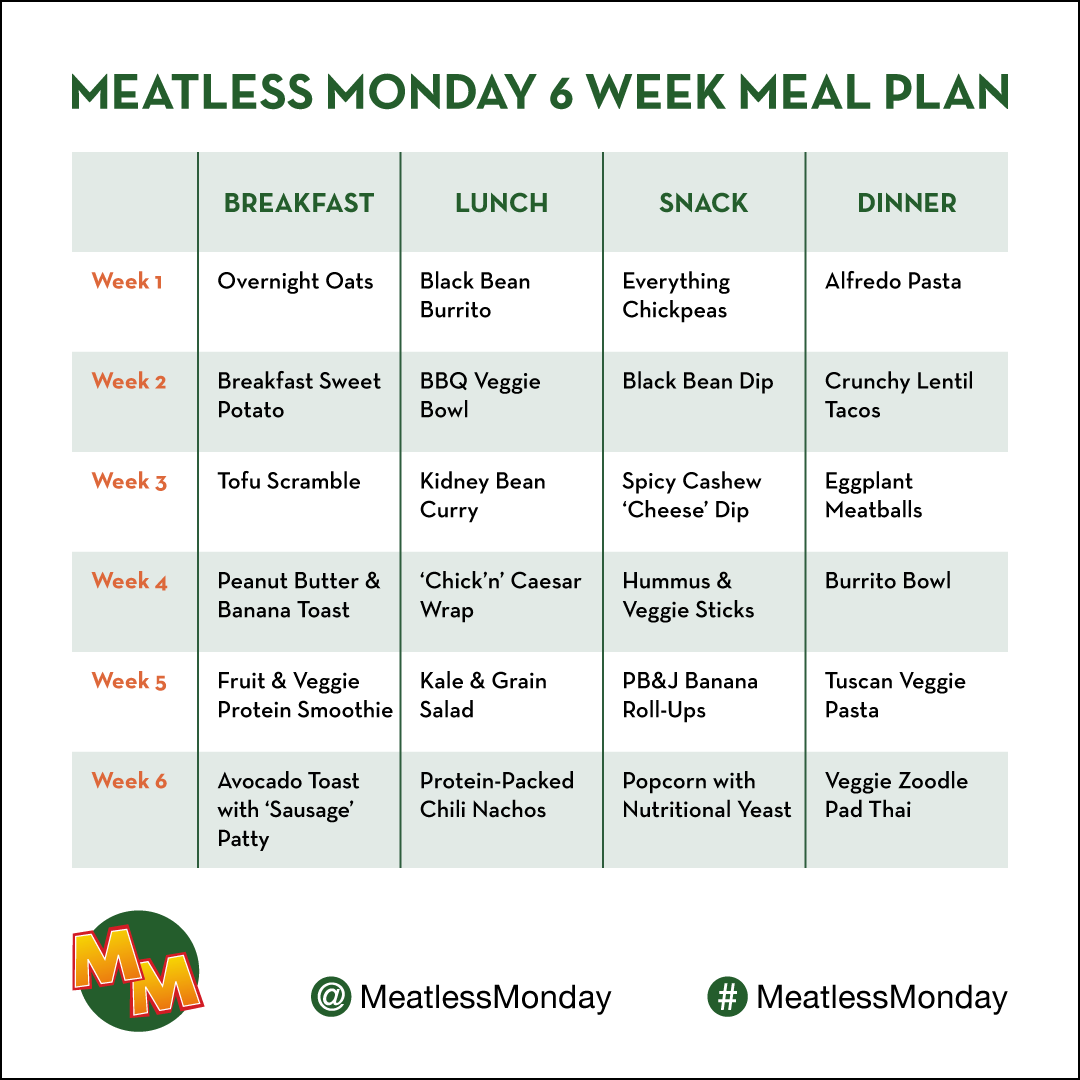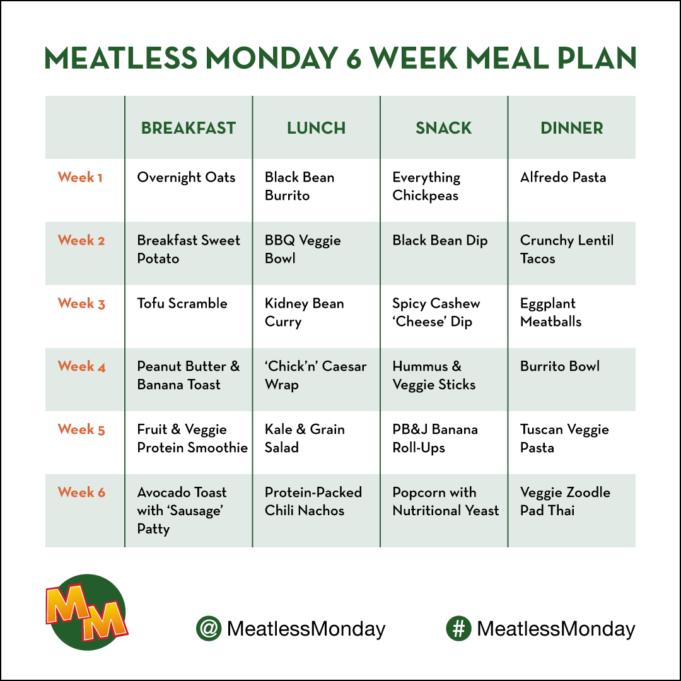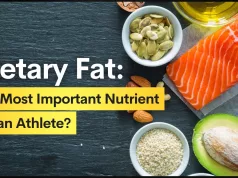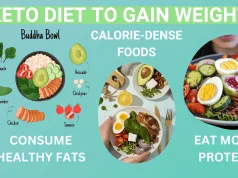Diet lists, those culinary blueprints for a healthier you, are everywhere you look. From the trendy ketogenic diet to the classic Mediterranean approach, the options seem endless. But navigating this world of dietary plans can feel like trying to decipher a foreign language, especially if you’re looking for a personalized approach that fits your lifestyle and goals.
Fear not, intrepid foodie! This guide is your compass, leading you through the labyrinth of diet lists, revealing their secrets and helping you find the perfect path to your own culinary utopia.
Whether you’re seeking to shed a few pounds, manage a health condition, or simply want to eat more nutritiously, the right diet list can be a powerful tool. We’ll delve into the various types of diet lists, exploring their unique features and potential benefits.
We’ll also guide you through the process of creating your own personalized plan, ensuring it’s both effective and sustainable. Get ready to embark on a journey of culinary discovery and unlock the secrets to a healthier, happier you!
Types of Diet Lists

Dieting is a popular topic, with countless approaches promising weight loss, improved health, and enhanced well-being. But navigating the vast landscape of diet types can be overwhelming. This guide explores different diet lists, highlighting their key features, target audience, pros, and cons.
Types of Diet Lists
This section provides a comprehensive overview of various diet lists, categorizing them based on their underlying principles and target audience.
Diet lists can be a great way to stay on track with your health goals, but let’s be real, sometimes they feel like a never-ending list of “thou shalt nots.” If you’re considering the keto diet, a good question to ask yourself is, is keto diet safe for you?
Ultimately, the best diet list is the one that fits your lifestyle and helps you feel your best.
- Calorie-Restricted Diets:These diets focus on reducing overall calorie intake, aiming for weight loss. They typically involve tracking calories consumed and adjusting portion sizes.
- Pros:Effective for weight loss, easy to understand and implement, can be customized to individual needs.
- Cons:Can lead to nutrient deficiencies if not planned carefully, can be challenging to maintain long-term, may not address underlying health issues.
- Macro-Based Diets:These diets emphasize the proportions of macronutrients (carbohydrates, protein, and fat) consumed. They often involve tracking and adjusting the intake of each macronutrient based on specific goals.
- Pros:Can be customized to individual needs, can promote satiety and improve metabolic health, can be beneficial for athletes and those with specific health conditions.
- Cons:Can be restrictive and challenging to follow, may not be suitable for everyone, can lead to nutrient deficiencies if not planned carefully.
- Specific Food Group Elimination Diets:These diets exclude certain food groups, often based on perceived health benefits or sensitivities.
- Pros:Can help identify food intolerances or allergies, may improve symptoms of certain health conditions.
- Cons:Can be restrictive and difficult to maintain long-term, may lead to nutrient deficiencies, may not be effective for weight loss.
- Lifestyle Diets:These diets focus on broader lifestyle changes, emphasizing whole foods, mindful eating, and regular physical activity.
- Pros:Promote overall health and well-being, emphasize sustainable lifestyle changes, can be adapted to individual needs and preferences.
- Cons:May not lead to rapid weight loss, require consistent effort and commitment, may not be suitable for everyone.
Popular Diet Lists
This section explores examples of popular diet lists, outlining their key features, target audience, and potential benefits and drawbacks.
- Mediterranean Diet:Emphasizes fruits, vegetables, whole grains, legumes, nuts, and olive oil, with moderate consumption of fish and poultry, and limited intake of red meat, saturated fats, and processed foods.
- Target Audience:Individuals seeking to improve overall health, reduce the risk of chronic diseases, and promote longevity.
- Pros:Rich in antioxidants and other beneficial nutrients, linked to lower risk of heart disease, stroke, type 2 diabetes, and certain cancers.
- Cons:Can be challenging to follow if access to fresh produce is limited, may require significant lifestyle changes, may not be suitable for individuals with specific dietary restrictions.
- Ketogenic Diet:A high-fat, low-carbohydrate diet that forces the body to enter a state of ketosis, where it burns fat for energy instead of glucose.
- Target Audience:Individuals seeking rapid weight loss, improved blood sugar control, or potential benefits for certain neurological conditions.
- Pros:Can lead to significant weight loss, may improve blood sugar control, may have potential benefits for epilepsy and other neurological conditions.
- Cons:Can be restrictive and challenging to follow, may lead to nutrient deficiencies, may cause side effects such as fatigue, constipation, and bad breath, may not be suitable for everyone, especially individuals with certain medical conditions.
- DASH Diet:Stands for Dietary Approaches to Stop Hypertension, a diet rich in fruits, vegetables, whole grains, and low-fat dairy products, with limited intake of saturated and unhealthy fats, cholesterol, and sodium.
- Target Audience:Individuals seeking to lower blood pressure, reduce the risk of heart disease, and improve overall health.
- Pros:Proven to lower blood pressure, linked to reduced risk of heart disease and stroke, can be a healthy and sustainable way of eating.
- Cons:May require significant lifestyle changes, may not be suitable for individuals with certain dietary restrictions, may not lead to rapid weight loss.
- Vegetarian Diet:Excludes all animal products, including meat, poultry, fish, eggs, and dairy.
- Target Audience:Individuals seeking to reduce their environmental impact, improve animal welfare, or follow ethical or religious beliefs, or individuals with allergies or intolerances to animal products.
- Pros:Typically lower in saturated fat and cholesterol, often higher in fiber and antioxidants, can be beneficial for the environment and animal welfare.
- Cons:May require careful planning to ensure adequate intake of essential nutrients, can be challenging to follow in social situations, may not be suitable for individuals with specific dietary needs.
Creating a Diet List
Crafting a personalized diet list is like designing a bespoke suit for your body – it needs to fit your unique needs and preferences. This isn’t about a rigid set of rules, but a roadmap to help you achieve your health goals while enjoying delicious and satisfying meals.
Factors to Consider When Designing a Diet List
When designing a diet list, several factors come into play, ensuring it aligns with your individual needs and preferences.
- Dietary Restrictions: This includes allergies, intolerances, or religious or ethical beliefs that might influence your food choices. For example, a vegan diet excludes all animal products, while a gluten-free diet avoids wheat, rye, and barley.
- Health Goals: Are you looking to lose weight, gain muscle, improve your energy levels, or manage a specific health condition? Your goals will guide the types of foods and the amount of calories you consume.
- Lifestyle: Consider your daily routine, activity level, and access to healthy food options. A busy professional might need quick and easy meal options, while an athlete might require a higher calorie intake to support their training regimen.
Creating a Balanced and Sustainable Diet List, Diet lists
Creating a diet list is like building a house; it needs a solid foundation. Here’s a step-by-step guide to help you build a balanced and sustainable diet plan:
- Set Realistic Goals: Don’t aim for drastic changes overnight. Focus on small, achievable steps that you can maintain over time. For example, instead of cutting out all carbs, aim to reduce your intake gradually.
- Incorporate a Variety of Foods: Aim for a rainbow on your plate! Include fruits, vegetables, whole grains, lean proteins, and healthy fats in your diet. This ensures you get a wide range of nutrients.
- Listen to Your Body: Pay attention to how your body feels after eating different foods. If you experience bloating, digestive issues, or other symptoms, consider eliminating those foods from your diet.
- Plan Ahead: Don’t wait until you’re hungry to decide what to eat. Take some time to plan your meals and snacks for the week. This will help you make healthier choices and avoid impulsive decisions.
- Stay Hydrated: Water is essential for good health and can help you feel fuller for longer. Aim to drink at least eight glasses of water per day.
- Seek Professional Guidance: If you have any underlying health conditions or are unsure about creating a healthy diet list, consult a registered dietitian or other healthcare professional. They can provide personalized advice and support.
Diet List Resources
Finding the right diet list resources can be a game-changer in your quest for a healthier lifestyle. It’s like having a personal nutritionist in your pocket, guiding you towards making informed choices. But with a sea of information out there, knowing where to turn can be overwhelming.
This section will help you navigate the vast world of diet list resources, equipping you with the tools to make smart choices for your well-being.
Reputable Sources for Diet List Information
Choosing reliable sources is crucial to ensure you’re getting accurate and evidence-based information. Here’s a rundown of reputable sources for diet list information:
- Websites:
- National Institutes of Health (NIH):The NIH offers a wealth of information on nutrition, including dietary guidelines, healthy eating plans, and resources for specific health conditions. They’re the gold standard for reliable health information.
- Academy of Nutrition and Dietetics (AND):The AND is a professional organization for registered dietitians. Their website provides evidence-based information on nutrition and healthy eating, including tips for creating healthy meal plans.
- Harvard T.H. Chan School of Public Health:This prestigious institution offers a plethora of resources on nutrition, including articles, infographics, and videos on healthy eating. Their content is scientifically backed and easy to understand.
- Books:
- “The Complete Book of Nutrition” by Elizabeth Somer:This comprehensive book provides a deep dive into the science of nutrition, covering everything from macronutrients to micronutrients. It’s a great resource for those seeking a detailed understanding of nutrition.
- “The Mediterranean Diet Cookbook” by America’s Test Kitchen:This cookbook offers delicious and healthy recipes based on the Mediterranean diet, a way of eating known for its heart-healthy benefits.
- “Intuitive Eating” by Evelyn Tribole and Elyse Resch:This book emphasizes mindful eating and honoring your body’s hunger and fullness cues, promoting a healthier relationship with food.
- Mobile Applications:
- MyFitnessPal:This popular app allows you to track your calorie intake, macronutrients, and exercise. It offers a vast database of foods and recipes, making it easy to stay on track with your diet.
- Noom:Noom combines personalized coaching with behavior change techniques to help you develop healthy habits. It provides a structured approach to weight loss and overall well-being.
- Lose It!:This app focuses on weight loss and offers a variety of tools to help you reach your goals, including calorie tracking, meal planning, and exercise tracking.
Comparing and Contrasting Diet List Resources
Different resources have their own strengths and weaknesses. Here’s a comparison of some popular resources:
| Resource | Strengths | Weaknesses |
|---|---|---|
| NIH website | Highly credible, evidence-based information, extensive resources | May be too technical for some readers |
| AND website | Practical tips, focused on registered dietitian advice | May not be as comprehensive as some other resources |
| Harvard T.H. Chan School of Public Health website | Easy-to-understand information, variety of formats | May not offer personalized advice |
| “The Complete Book of Nutrition” | Detailed information on nutrition science | May be overwhelming for beginners |
| “The Mediterranean Diet Cookbook” | Delicious recipes, focus on healthy eating | May not be suitable for all dietary restrictions |
| “Intuitive Eating” | Promotes a positive relationship with food | May not be suitable for everyone, especially those with specific health conditions |
| MyFitnessPal | Easy calorie tracking, large food database | May not offer personalized guidance |
| Noom | Personalized coaching, behavior change techniques | Can be expensive |
| Lose It! | Focus on weight loss, variety of tools | May not be as comprehensive as some other apps |
Personalized Diet Plans and Guidance
Some resources offer personalized diet plans and guidance. For example:
- Noomprovides a personalized weight loss program based on your individual goals and needs. It uses a combination of behavioral coaching and educational content to help you develop healthy habits.
- MyFitnessPaloffers a meal planning feature that allows you to create custom meal plans based on your dietary restrictions, calorie goals, and macronutrient targets.
- Registered dietitianscan provide personalized nutrition counseling and create customized meal plans based on your individual needs and health goals.
Diet List Examples
Diet list examples provide a practical framework for understanding how to create a balanced and healthy meal plan. These examples showcase different dietary approaches, allowing you to explore various options and find what best suits your needs and preferences.
Vegetarian Diet List Example
This example Artikels a sample weekly vegetarian diet list, emphasizing plant-based protein sources and diverse nutrient-rich foods.
| Day | Breakfast | Lunch | Dinner | Snacks |
|---|---|---|---|---|
| Monday | Oatmeal with berries and nuts | Lentil soup with whole-wheat bread | Tofu stir-fry with brown rice and vegetables | Apple slices with peanut butter, vegetable sticks with hummus |
| Tuesday | Tofu scramble with spinach and tomatoes | Black bean and corn salad with quinoa | Vegetable curry with chickpeas and basmati rice | Trail mix with nuts, seeds, and dried fruit |
| Wednesday | Smoothie with spinach, banana, and almond milk | Whole-wheat pita with hummus, cucumber, and sprouts | Lentil and vegetable stew with whole-grain bread | Edamame pods with sea salt |
| Thursday | Yogurt with granola and fruit | Chickpea salad sandwich on whole-wheat bread | Vegetarian chili with brown rice | Fruit salad with honey |
| Friday | Breakfast burrito with tofu, beans, and salsa | Quinoa salad with black beans, corn, and avocado | Vegetable pasta with marinara sauce | Popcorn with olive oil and spices |
| Saturday | Pancakes with fruit and maple syrup | Vegetarian pizza with whole-wheat crust | Vegetable lasagna with ricotta cheese | Dark chocolate with almonds |
| Sunday | Avocado toast with eggs | Falafel wrap with hummus and vegetables | Roasted vegetables with quinoa and tahini dressing | Mixed nuts and seeds |
Low-Carb Diet List Example
This example presents a sample weekly low-carb diet list, focusing on protein, healthy fats, and low-carbohydrate vegetables.
| Day | Breakfast | Lunch | Dinner | Snacks |
|---|---|---|---|---|
| Monday | Scrambled eggs with spinach and cheese | Tuna salad with avocado and lettuce wraps | Grilled salmon with roasted asparagus and broccoli | Hard-boiled eggs, cheese sticks |
| Tuesday | Greek yogurt with berries and nuts | Chicken breast salad with mixed greens and vinaigrette | Steak with cauliflower mash and green beans | Celery sticks with peanut butter |
| Wednesday | Omelet with mushrooms and bell peppers | Turkey lettuce wraps with avocado and salsa | Shrimp scampi with zucchini noodles | Olives, almonds |
| Thursday | Avocado toast with eggs and bacon | Ground beef and vegetable stir-fry with coconut aminos | Chicken stir-fry with broccoli and cauliflower rice | String cheese, cucumber slices |
| Friday | Bacon and egg breakfast casserole | Tuna salad with mayonnaise and pickles | Roast chicken with roasted Brussels sprouts and sweet potato | Mixed nuts and seeds |
| Saturday | Breakfast sausage with eggs and avocado | Burger with lettuce, tomato, and avocado on a bunless patty | Pork chops with roasted carrots and green beans | Dark chocolate with nuts |
| Sunday | Eggs Benedict with spinach and hollandaise sauce | Leftover roast chicken salad with mixed greens | Steak with mashed cauliflower and broccoli | Hard-boiled eggs, cheese cubes |
Diet List Tips: Diet Lists
A diet list is your roadmap to a healthier you, but even the best map needs a good navigator. Here are some tips to make sure you stay on track and reach your dietary goals.
Meal Prepping
Meal prepping can be your secret weapon for diet success. By preparing meals in advance, you can ensure that you have healthy options readily available, making it easier to resist unhealthy temptations.
- Plan your meals:Start by planning your meals for the week. This helps you create a shopping list and avoid impulsive purchases.
- Batch cook:Cook large batches of food that can be easily divided into individual portions. This saves time and ensures you have enough healthy meals for the week.
- Freeze leftovers:Freeze any leftover portions for later. This prevents food waste and gives you a quick and easy meal option when you’re short on time.
Staying Hydrated
Water is essential for overall health and plays a crucial role in managing your weight. Staying hydrated can help you feel fuller, reduce cravings, and boost your metabolism.
- Drink water throughout the day:Aim to drink at least eight glasses of water daily. Carry a reusable water bottle with you and refill it throughout the day.
- Choose water over sugary drinks:Avoid sugary drinks like soda, juice, and sweetened coffee and tea. These drinks are high in calories and can contribute to weight gain.
- Add flavor to your water:If you find plain water boring, try adding slices of fruit, herbs, or cucumbers to your water for a refreshing taste.
Managing Cravings
Cravings are a common challenge when following a diet. It’s important to develop strategies for managing cravings to prevent them from derailing your efforts.
- Identify your triggers:What situations or emotions tend to trigger your cravings? Once you know your triggers, you can develop strategies to avoid them.
- Distract yourself:When a craving hits, distract yourself with an activity you enjoy, such as reading, listening to music, or going for a walk.
- Satisfy your cravings with healthy alternatives:If you’re craving something sweet, try a piece of fruit or a small handful of dark chocolate. If you’re craving something salty, try a handful of nuts or a few crackers.
Eating Out and Social Events
Dining out and attending social events can be challenging when you’re following a diet. It’s important to have a plan to make healthy choices in these situations.
- Check the menu beforehand:If you know where you’re going to eat, check the menu online beforehand to see what healthy options are available.
- Choose grilled or baked dishes:Opt for grilled or baked dishes instead of fried or breaded options.
- Ask for modifications:Don’t be afraid to ask for modifications to your meal, such as having your dish prepared without butter or oil.
- Control your portions:When eating out, be mindful of your portion sizes and don’t feel obligated to finish everything on your plate.
Tracking Progress and Adjusting
It’s important to track your progress and make adjustments to your diet list as needed. This will help you stay motivated and ensure you’re on the right track to achieving your goals.
- Keep a food journal:Record everything you eat and drink, along with the time and your feelings before and after eating. This can help you identify patterns and areas for improvement.
- Measure your progress:Regularly measure your progress by tracking your weight, body measurements, and energy levels. This will help you stay motivated and see the results of your efforts.
- Seek professional guidance:If you’re struggling to follow your diet list or aren’t seeing the results you want, consider seeking professional guidance from a registered dietitian or nutritionist.
Diet List and Health
A well-structured diet list can be your secret weapon for a healthier, happier you! It’s not just about shedding pounds; it’s about fueling your body with the right nutrients to thrive.
Weight Management
Maintaining a healthy weight is crucial for overall well-being. A balanced diet list can help you achieve and sustain a healthy weight by controlling calorie intake and ensuring you’re getting the right balance of macronutrients (proteins, carbohydrates, and fats).
Diet lists can be a great way to get on track, but let’s be honest, sometimes you just crave a little bubbly fizz. That’s where diet coke comes in, offering a guilt-free way to satisfy those soda cravings. Of course, moderation is key, and you’ll want to make sure your diet list includes plenty of healthy, whole foods to keep you feeling your best.
Chronic Disease Prevention
Eating a balanced diet can significantly reduce your risk of developing chronic diseases like heart disease, stroke, type 2 diabetes, and certain types of cancer. This is because a healthy diet can help regulate blood pressure, cholesterol levels, and blood sugar levels.
A diet rich in fruits, vegetables, whole grains, and lean protein can help lower your risk of chronic diseases.
Overall Well-being
Beyond physical health, a balanced diet list can positively impact your mental and emotional well-being. Eating nutritious foods can boost energy levels, improve mood, and enhance cognitive function.
Diet Lists and Specific Health Conditions
Diabetes
For individuals with diabetes, a diet list plays a crucial role in managing blood sugar levels. This often involves choosing foods with a low glycemic index (GI), which are digested slowly and don’t cause rapid spikes in blood sugar.
Diet lists can be a real drag, but they don’t have to be all doom and gloom. A little bit of fun can go a long way, like a refreshing glass of diet ginger ale after a long day of sticking to your plan.
And who knows, maybe you’ll find that your diet list is actually a recipe for a happier, healthier you!
Heart Disease
A heart-healthy diet list emphasizes fruits, vegetables, whole grains, lean protein, and healthy fats while limiting saturated and trans fats, cholesterol, and sodium. This can help lower blood pressure, improve cholesterol levels, and reduce the risk of heart disease.
Final Conclusion
So, you’ve reached the end of our dietary odyssey, armed with the knowledge and tools to navigate the world of diet lists with confidence. Remember, the key to success lies in finding a plan that aligns with your individual needs and preferences.
Don’t be afraid to experiment, seek professional guidance, and most importantly, enjoy the process! After all, eating well shouldn’t feel like a chore – it should be a celebration of deliciousness and a path to a healthier, happier you.
Bon appétit!
Q&A
What is the best diet for me?
There’s no one-size-fits-all answer! The best diet for you depends on your individual goals, health conditions, and preferences. Consulting a registered dietitian or nutritionist is highly recommended to create a personalized plan.
Are diet lists safe?
While most diet lists are safe when followed correctly, it’s crucial to consult with a healthcare professional before making significant dietary changes, especially if you have any underlying health conditions.
How long should I follow a diet list?
The duration depends on your goals. Some diet lists are meant for short-term weight loss, while others are designed for long-term health maintenance. It’s best to discuss the appropriate duration with your healthcare provider.
What are some common diet list mistakes?
Some common mistakes include: restricting calories too severely, eliminating entire food groups, and not paying attention to portion sizes. It’s important to create a balanced and sustainable plan.
























